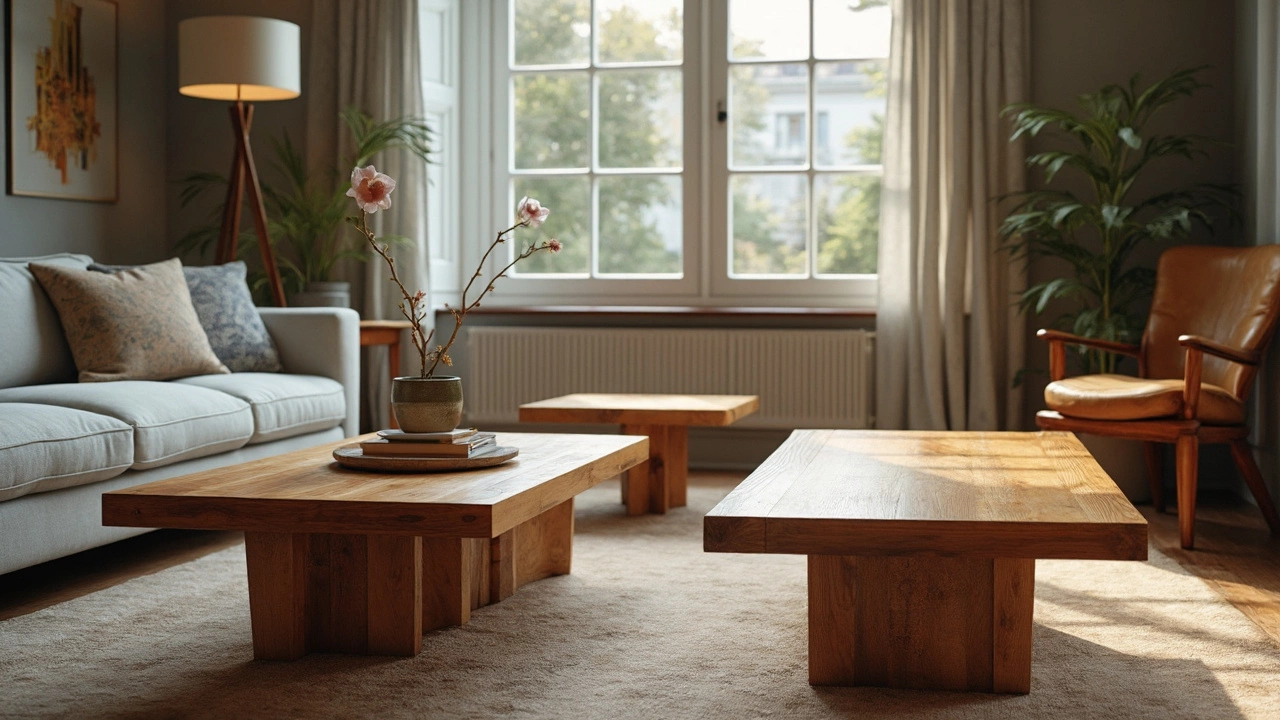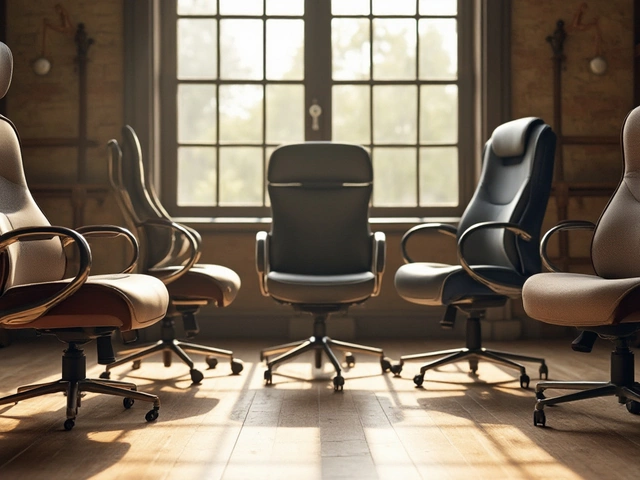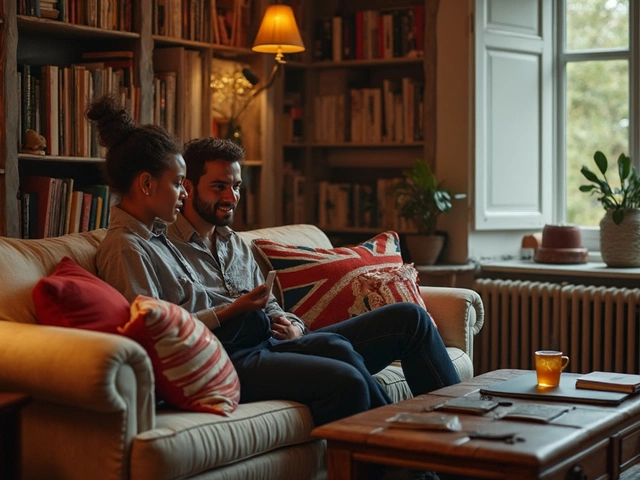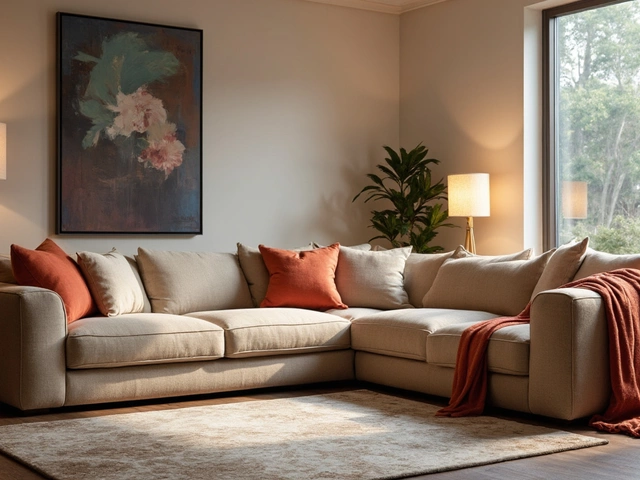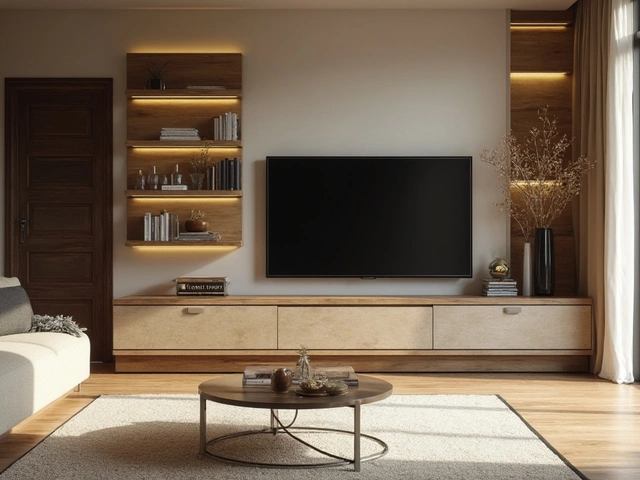Ever look at a coffee table and wonder why some feel solid while others just seem flimsy? A lot of it comes down to the wood’s thickness. Get it right, and your coffee table can handle stacks of books, heavy dishes—even someone accidentally sitting on it. Get it wrong, and you’re stuck with a table that wobbles every time you set down your mug.
For most coffee tables, the magic number usually falls between 1 inch and 1.5 inches thick for the tabletop. Builders love this range because it hits the sweet spot—it’s thick enough to be strong and stable, but not so chunky that it looks clunky or costs a fortune in materials. Go thinner than an inch? You’re asking for sagging or even cracks over time if the table spans more than two feet without support.
There’s more to it than just picking a number, though. The type of wood matters, too. Hardwoods like oak, maple, or walnut are sturdy even at the lower end of that range. Softer woods like pine or poplar usually need to be a bit thicker to avoid dents or dings from everyday use.
- Standard Wood Thicknesses Coffee Tables Use
- Why Thickness Really Matters
- Strength vs. Style: Finding Your Sweet Spot
- Tips for Choosing and Working With Wood
Standard Wood Thicknesses Coffee Tables Use
Let’s cut straight to it: the coffee table you see at furniture stores usually sticks to certain wood thicknesses, and there’s a good reason for it. Standard thicknesses work because they’re tested for strength and just look right with most designs.
Most manufacturers stick to these numbers for the tabletop panels:
- 1 inch (25 mm): Classic for solid hardwoods like oak, maple, or cherry. This is thick enough for load-bearing without making the piece heavy or pricey.
- 1.25 inches (32 mm): Gives a beefier, sturdier feel—great for rustic or farmhouse looks.
- 1.5 inches (38 mm): Chosen for really chunky tables or when the design needs a bold, confident top.
Rarely, you’ll see tops as thin as 0.75 inches (19 mm), usually with engineered woods like MDF or plywood backed up by a sturdy frame. Anything under that, and you risk warping and sagging unless you add extra bracing underneath.
Let’s put some numbers together for a quick comparison. Check out how often each thickness pops up in commercial tables:
| Thickness | Common Use (%) |
|---|---|
| 0.75 inch (19 mm) | 8 |
| 1 inch (25 mm) | 65 |
| 1.25 inch (32 mm) | 20 |
| 1.5 inch (38 mm) | 7 |
A lot comes down to the wood, too. For softwoods like pine, builders sometimes go up to 1.25 inches or add an edge trim that makes the top look thicker—even if the inside core is thinner. This way, you get style and strength without unnecessary weight.
If you’re building your own or looking at custom work, stick to at least 1 inch for hardwoods, especially for spans over 3 feet across. For smaller tables, you can get by with a little less. Just keep in mind: lower than an inch and you might start to see dips in the surface, especially if you ever let kids sit on it or overload it during family game night.
Why Thickness Really Matters
Let’s get straight to it. The thickness of your coffee table’s wood isn’t just about looks—it’s all about how well the table holds up during daily life. If the wood’s too thin, it’s much more likely to sag, warp, or even split. Go too thick, and suddenly your table’s a back-breaker to move and way more expensive than it needs to be.
One quick fact: a tabletop that's less than 1 inch thick, especially if it’s made from softwood, can actually start to flex with pressure. Over a couple of years, you might notice a curve forming right where you usually set things down.
Most people want a coffee table that’s durable and lasts for years. Here’s why thickness matters for that:
- Coffee table tops in the 1"–1.5" range stay flat and resist bowing (especially if you’re dealing with solid wood).
- The right thickness helps fight off dents, scratches, and dings—so it keeps looking decent after all those movie nights and snack sessions.
- Extra-thick tops make a table look beefy and solid, but add lots of weight and cost. Thinner tops are sleeker but need better support underneath.
Nothing makes this clearer than a side-by-side look. Here’s how different tabletop thicknesses stack up for common woods:
| Wood Type | 1" Thickness | 1.25" Thickness | 1.5" Thickness |
|---|---|---|---|
| Oak | Sturdy, resists bending up to 36" wide | Very strong, best for heavy use | Extremely solid, can be overkill unless for big tables |
| Pine | May flex or dent over time | Stable for standard use, with some caution | Safe for families, pets, and clumsy guests |
| Maple | Stable with light support | Great everyday durability | Bulletproof (almost!) |
Thicker wood also matters if you ever want to refinish your table or sand out deep scratches. Thinner boards don’t give you much leeway. Bottom line? Wood thickness decides how well your table survives real life—and how much it’ll cost you to get the look you want.
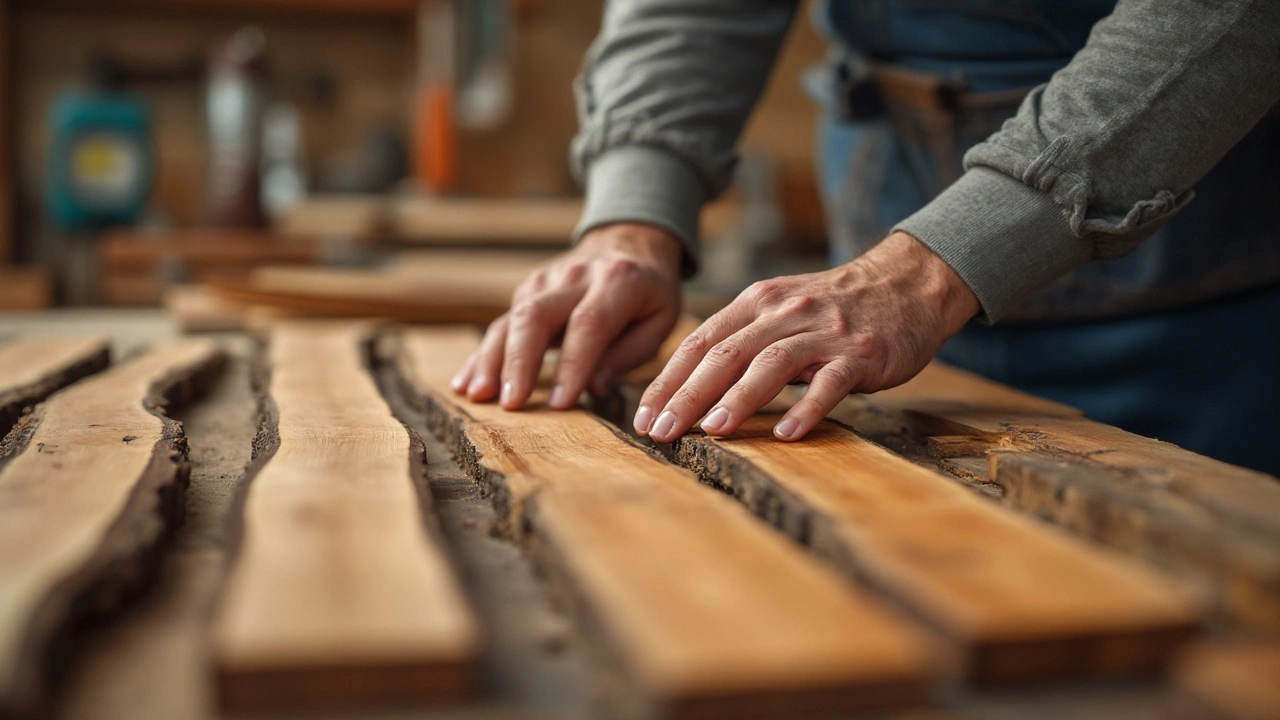
Strength vs. Style: Finding Your Sweet Spot
Here’s where choosing the right thickness gets tricky. You want your coffee table to look good, but you also need it to be functional. Nobody enjoys a table that looks sleek but gets shaky the second you put your feet up. On the flip side, a table with a super-thick top can come off looking heavy or outdated, especially in a small living room.
If you’re going for a tough, industrial vibe, thicker wood (think 1.5 inches or more) looks the part and gives extra durability. Modern or minimalist tables? These often feature thinner tops, sometimes between 0.75 and 1 inch, but they usually have strong underside support or metal frames to back them up. You’ll see some Scandinavian designs get away with even slimmer profiles, but they’re usually using solid hardwoods or engineered panels that can take everyday knocks.
To make this more concrete, check out these typical thicknesses and what they’re best for:
| Wood Thickness (inches) | Best For | Notes |
|---|---|---|
| 0.75 - 1.0 | Modern, minimalist looks | Needs strong support, especially if made from softer wood |
| 1.0 - 1.25 | Standard coffee tables | Suits most styles; balances strength and visual weight |
| 1.25 - 1.5+ | Rustic, heavy-duty designs | Holds up against rough use and larger spans |
Here’s what really matters for the coffee table you actually use every day:
- If your table will hold heavy items (big books, serving trays), go with thicker wood or add extra bracing underneath.
- Long spans—any top stretching over 3 feet—definitely need more thickness or a center support to prevent permanent sagging.
- Don’t just pick wood thickness based on looks alone. If your surface is extra-wide, even a beautiful thin slab will bend over time unless it’s properly reinforced.
The sweet spot is usually right around 1 to 1.25 inches for a standard-sized table (about 4 feet long and 2 feet wide), especially if you’re using hardwood. Want something lighter on the eyes? Consider metal legs or a supporting frame to let you use thinner wood without losing strength.
Tips for Choosing and Working With Wood
Let’s make this easy—picking the right wood for a coffee table isn’t just about going to the lumberyard and grabbing whatever looks nice. You want to think long-term, and a few simple choices make all the difference in how your table holds up and how good it looks in your living space.
First, always check for straight boards. Warped or twisted pieces make assembly a headache and can mess up your finished table. Run your eye down the edge of each board at the store—the straighter, the better.
Grain direction matters, too. Boards with the grain running along the length are stronger and resist bending. For the tabletop, look for boards with consistent, tight grain, and avoid knots or cracks, especially if you’re sticking close to the minimum thickness.
When cutting or sanding, take it slow. Rushing creates splinters, especially with softer woods like pine. If you’re joining boards together for a wider surface, clamp them tightly and use wood glue plus dowels or biscuits for extra strength. People often skip this, but it keeps those seams tight, even after years of hot coffee mugs and books landing on the table.
One trick that comes up a lot in woodworking forums: sealing both sides of the tabletop. This helps balance moisture and keeps wood from warping. Use the same finish on both the top and bottom—think polyurethane or hardwax oil.
- If you want a modern, light look, consider hardwood plywood with a solid wood edge. It usually comes in 3/4 inch (about 19mm) sheets and works well if supported underneath with a frame.
- For a chunky, rustic coffee table, stick to solid hardwoods at 1.25 inches thick or more.
- Never skip pre-drilling holes if you’re using screws. It saves the wood from splitting, especially close to the end of a board.
- If budget matters, don’t be afraid to use a less expensive wood for the base and legs, saving your money for a top-layer showpiece wood like walnut or oak.
Finally, if you’re worried about scratching or staining, finish with something durable—oil-based polyurethane is a go-to for high traffic tables. And don’t forget little felt pads under the legs—they save your floor and cut down on wobble.
